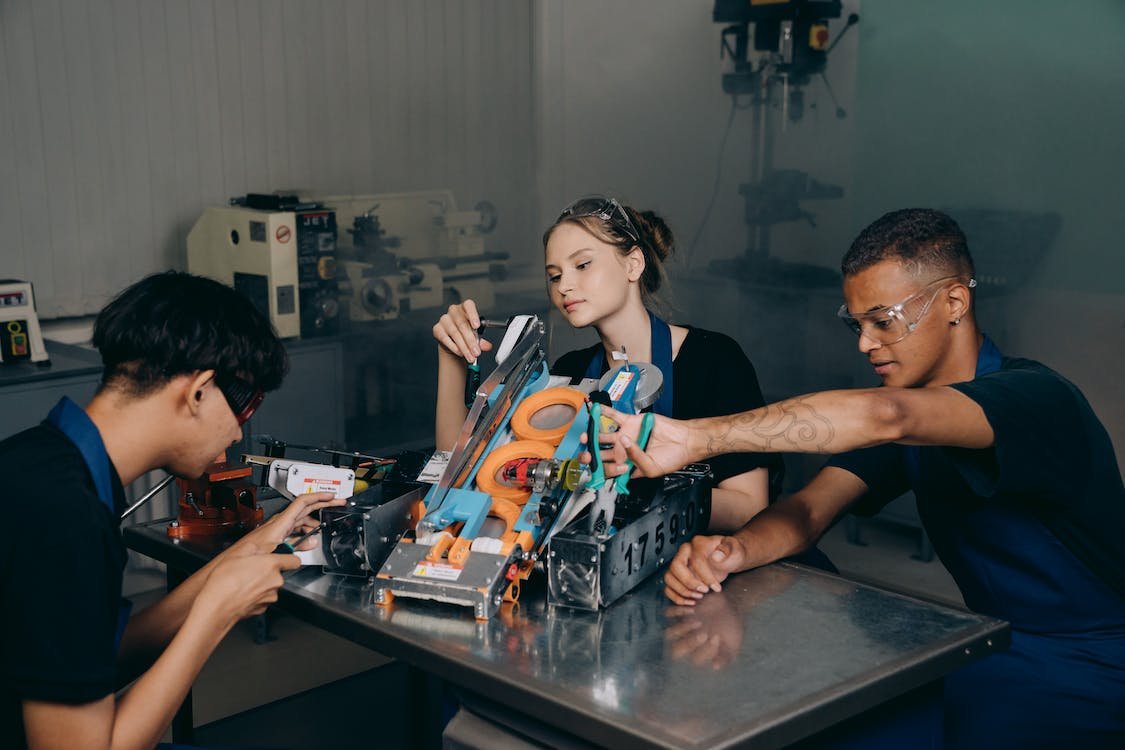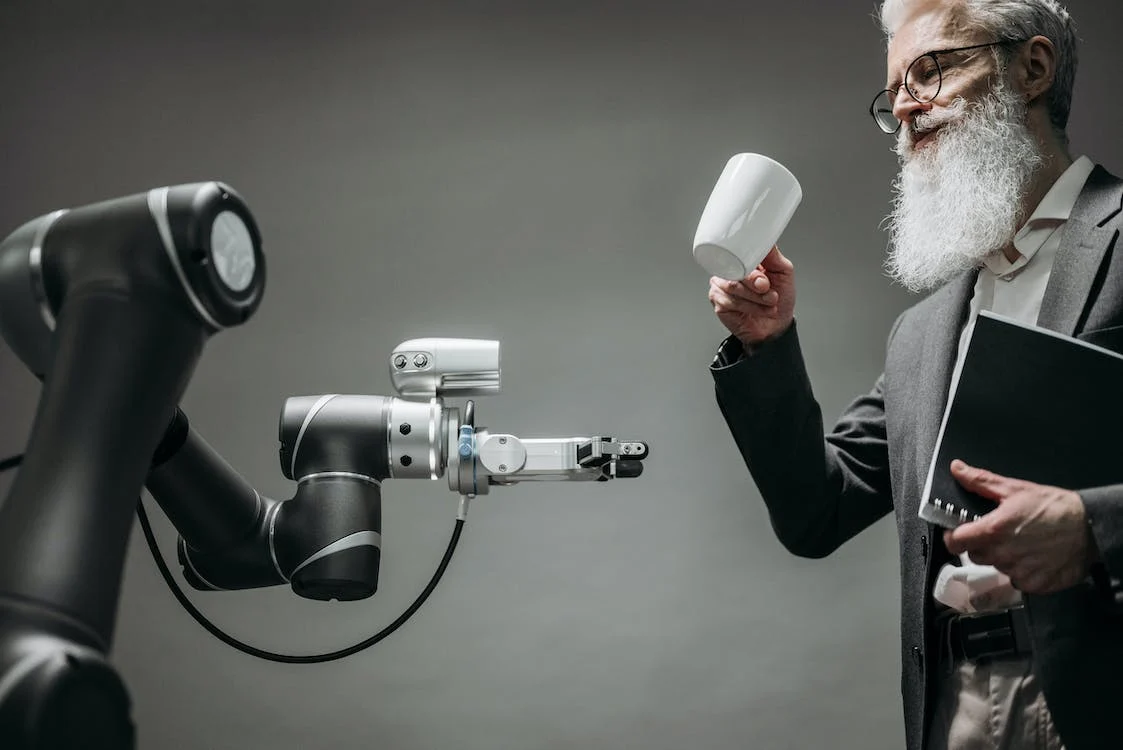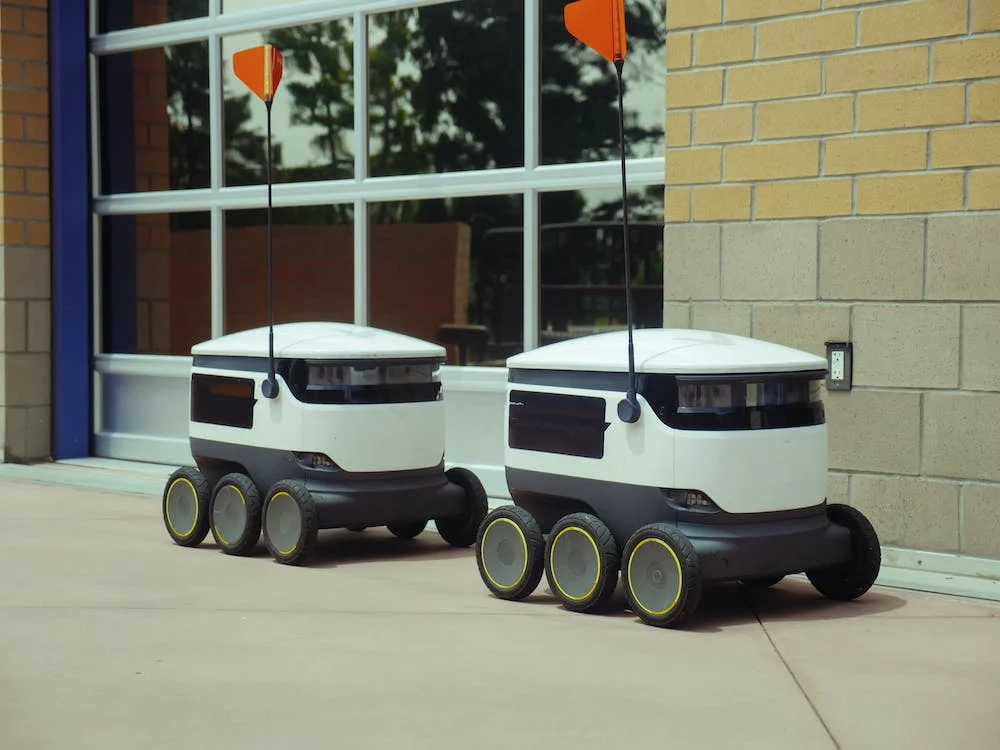The workplace is rapidly evolving, and if you're not paying attention, you could be left behind. Discover the game-changing trends and technologies shaping the future of work in 2023.
The idea of work has changed throughout time, but notably in the last several decades. The term "future of work" refers to anticipated changes in workplace settings, technological advancements, and organizational structures. The future of work focuses on how these
developments will impact how we work, the skills needed for work, and the organization of work.
In 2023, the pace of change in the workplace will only increase. Due to the proliferation of new technologies and the spread of the virus, the future of work is changing in unexpected and fascinating ways. The gig economy and remote work are two examples of how the work environment changes, and organizations must respond accordingly.
We'll look at the major trends and technologies influencing the workplace in 2023 as we think about the future of work. A collection of people working in the construction industry is called the "ecosystem. The impact of automation, digital transformation, robotics, and collaboration tools will be examined in the workforce. We'll also go on the rise of the gig economy and the necessity for reskilling to stay up with the labor market.
Yet technology isn't the only factor at play here. The future of work also strongly emphasizes employee experience and the skills necessary for a versatile workforce. We'll discuss the importance of reskilling and the skills to remain competitive in today's work market. We'll also examine how hybrid work impacts the workplace and how collaboration tools help remote and hybrid teams work together effectively.

Photo: Mikhail Nilov
This article will look at the state of work in 2023 and the trends and technologies that are changing it. Examined will be the impact of automation, digital transformation, and robotics on the workforce and the rise of the gig economy. We will also examine the importance of collaboration tools in allowing effective remote and hybrid teamwork and the need for reskilling to preserve competitiveness.
WORKPLACE TRENDS
The workplace is changing quickly, and as we get closer to 2023, we may anticipate even more revolutionary developments. Understanding the trend shaping work's future is crucial as businesses adjust to new technologies and changing needs. In this part, we'll explore some of the latest workplace trends expected to have a big influence.
Workplace trends are the modifications and alterations that take place in the contemporary workplace. Businesses may predict changes in the workplace and adjust appropriately by keeping up with the most recent trends.
NEW TRENDS SHAPING THE WORKPLACE IN 2023
●
In the gig economy
The gig economy has been expanding steadily over the last several years. It shows no indication of slowing down; his trend is the rise of freelancers, employees, and temp workers who take on short-term tasks or "gigs" rather than conventional full-time employment. Technologically advanced employment has facilitated this trend toward gig work by streamlining the process of finding and applying for temporary jobs.
●
Working remotely
The COVID-19 epidemic has hastened the trend toward remote work, which is expected to continue. As a result, employees may work remotely from their homes or other places outside of the workplace.
●
Work hybrid
The term "hybrid work" describes in-person and remote work. This strategy may provide workers the flexibility of remote work while still having access to in-person collaboration and assistance when necessary.
●
Workforce that is flexible
The necessity for businesses to be more flexible and responsive in the face of constantly shifting market circumstances has driven the rise of agile workforces. An agile workforce can swiftly respond to new conditions, whether switching to remote work, altering job duties, or learning new skills.
The future of work is expected to be significantly impacted by these new workplace trends. In addition to recruiting top people who appreciate work-life balance and flexibility, businesses that adopt these trends may benefit from greater flexibility,
productivity, and cost savings. Nevertheless, challenges are connected with these trends, such as the need for new tools and technologies to enable gig and hybrid wor and businesses to guarantee that remote employees are treated properly and supplied with necessary assistance.
T
ECHNOLOGIES SHAPING THE WORLD IN 2023
It's important to consider the technologies shaping the future of work as we approach the new year of 2023. Technology has played a significant role in shaping the workplace, and this trend shows no signs of abating soon. As a result, the future of work will be significantly impacted by the upcoming technologies we shall examine in this section.

Photo: Pavel Danilyuk
Workplace technologies are called tools, methods, and software utilized to make work simpler, more efficient, and more productive. These technologies include collaboration and automation, robots, and digital transformation tools.
●
AUTOMATION
Automation is not new technology, but it is changing the workplace. Automation is using technology to carry out work that people previously performed. In addition, automation is becoming increasingly intelligent and capable of executing difficult tasks. As a result, we should expect greater workplace automation in 2023, from chatbots and virtual assistants to automated data analysis.
● DIGITAL TRANSFORMATION
The term "digital transformation" refers to the widespread adoption of digital technology throughout an organization, leading to a dramatic shift in how it functions and provides value to its consumers. In 2023, we expect to see a rise in businesses embracing digital technologies to improve productivity, save costs, and create new business models examples of digital transformation technologies are clouded computing, big data analytics, and the internet of things.
● ROBOTICS
Robotics is the application of robots to the automation of workplace processes. From manufacturing and logistics to healthcare and hospitality, we may expect to see more robots in the workplace in 2023. This is because robots are getting more intelligent and capable of carrying out jobs previously only human beings could do.
●
COLLABORATION TOOLS
Collaboration tools are computer programs that enable teams and individuals to work together on projects, and activities We expect to see more businesses embracing remote tools to enhance communication and collaboration across remote hybrid teals in 2023. Project management software, video conferencing tools, and group chat applications are all examples of collaboration tools.
It is impossible to overestimate the impact of technology on the future of work. The workplace anyway we work will continue to be shaped by new technologies.
Business canto creates new business models thanks to digital transformation, making them more efficient. In certain sectors, the introduction of robots will result in a shift in how humans work, which will increase efficiency and safety. In addition, remote and hybrid teams will find it simpler to work together thanks to collaboration tools, boosting production and communication.
For workers with the necessary skills, these technologies are revolutionizing how we work and opening up new opportunities. As a result, businesses and workers need to embrace new technologies and adjust to the changes they bring as we go ahead. The future of work is promising, and technology is playing a significant part in shaping it.
WORKFORCE SKILLS GAP
The workforce has skills gaps when job seekers' skills don't match employers' needs. Again, what employers want and prospective employees must prove regarding education, training, and experience needs to be clarified. As employers struggle to locate the proper personnel for their firms, the skills gap is becoming a bigger issue in the contemporary workplace.
Technological development, demographic shifts, and economic trends are a few of the reasons that contribute to the skills gap in the workforce.
The quick rate of technological improvements is a key reason for the skills gap. The workplace is changing due to the proliferation of AI, robots, and automated processes. New jobs are also being created that call for various skill sets, such as data analysis and programming.

Photo: Kindel Media
A major factor in the skills gap is demographic shifts. As the baby boomer generation leaves the workforce, newer workers join it with different skill sets and expectations. Particularly in fields that need specific skills or experience, this generational transition is causing a gap in knowledge and experience.
Current economic trends are also exacerbating the skills gap.
Companies nowadays face increased levels of competition to the increasing globalization of the economy. As a result, workers with cross-cultural competence and linguistic skills are in more demand.
The skills gap significantly impacts employers, job seekers, and the economy. For example, when landing high-paying jobs with outstanding salaries and perks, workers are disadvantaged if they lack the right skills. Likewise, employers need help finding the right candidates to fill unfilled jobs, causing lost productivity and wasted opportunities.
The long-term viability of the economy depends on closing the skills gap, which may result from increased productivity, greater salaries, and more job opportunities. In addition, the economy as a whole may benefit from enhanced competitiveness and innovation, and employers can benefit from a wider pool of competent applicants.
RESKILLING
Rapid job market developments brought on by technical breakthroughs and automation will define the future of work. As a result, workers must adapt their skills to remain relevant in the job market. As a result, the process of acquiring new skills to execute a different job, known as reskilling, will grow significantly.
It is impossible to emphasize the value of reskilling Toto stay employable, workers must adapt their skills since automation, and AI will replace many occupations in the next years. In fact, according ta research by the World Economic Forum, 50% of all employees will need reskilling by 2025.
Therefore, companies must invest in reskilling programs to guarantee that their employees can stay up with technological advances.
Employees profit from reskilling but so do the companies they work for. Companies might save money by keeping their best employees instead of employing new ones. In addition, reskilling may assist companies in adapting to new technology and remaining competitive in the job market.
STRATEGIES FOR RESKILLING EMPLOYEES
Identifying the skills that will be needed in the future and offering training for those skills is one strategy. This may be accomplished via internal training programs, online courses, or collaborations with educational institutions.
The second tactic is to foster a culture of learning inside the
organization. This entails empowering employees to take responsibility for their learning and giving them opportunities to hone new skills. Again, mentorship schemes, employment swaps, and interdisciplinary initiatives help.
To offer reskilling opportunities for its employees to deliver training programs, including collaborating with educational institutions, trade groups, or governmental organizations.








